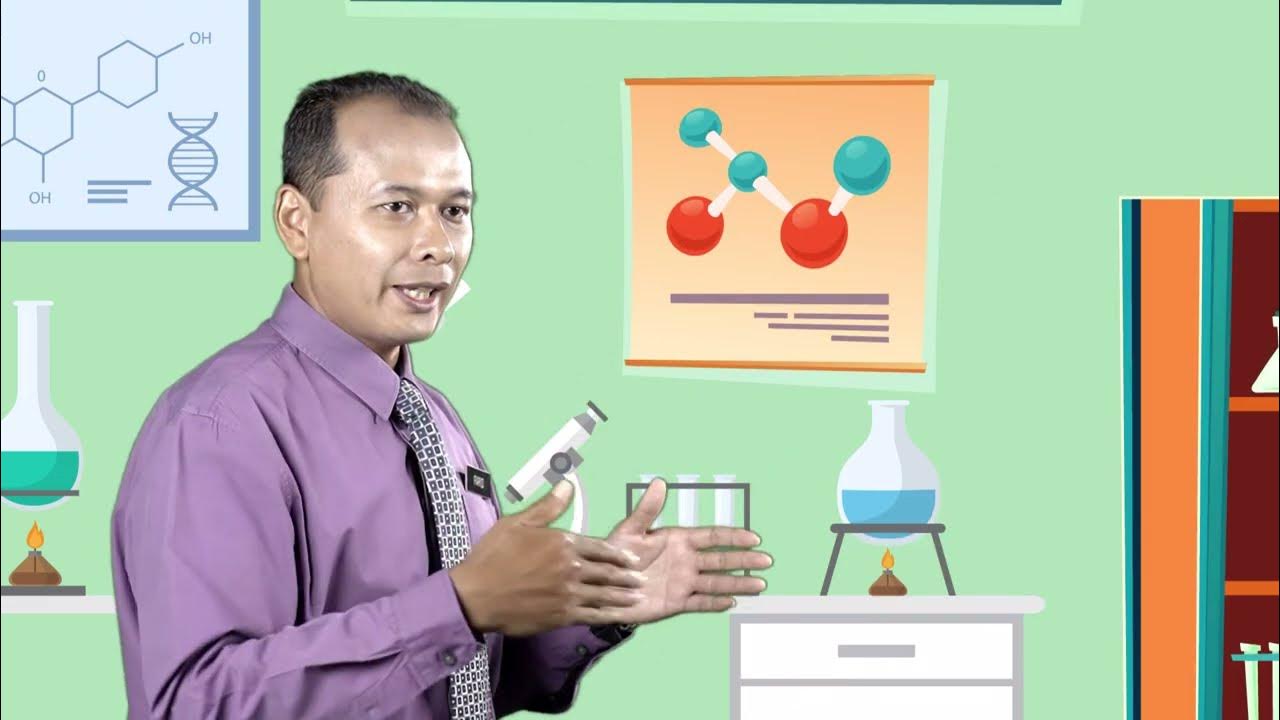2. Atoms, Elements & Compounds (Part 1) (1/4) (Cambridge IGCSE Chemistry 0620 for 2023, 2024 & 2025)
Summary
TLDRThis video introduces the fundamentals of atoms, elements, compounds, and mixtures, tailored for the Cambridge IGCSE Chemistry syllabus. It explains the definitions and differences among these concepts, emphasizing that elements are pure substances made of one type of atom, while compounds consist of two or more different atoms chemically combined. Mixtures, on the other hand, are physically combined substances that retain their individual properties. The video also delves into atomic structure, detailing subatomic particles, the atomic number, and the mass number, providing viewers with a comprehensive understanding of the building blocks of matter.
Takeaways
- 😀 Elements are pure substances made of only one type of atom, represented by chemical symbols (e.g., O for oxygen).
- 😀 There are approximately 118 known elements, each with unique properties that cannot be broken down into simpler substances.
- 😀 Compounds are formed when two or more different elements chemically combine and have distinct properties different from their individual elements.
- 😀 Chemical formulas (e.g., H₂O for water, CO₂ for carbon dioxide) represent compounds, which cannot be separated physically.
- 😀 Mixtures consist of two or more substances that are physically combined but not chemically bonded, retaining their individual properties.
- 😀 Atoms are the basic units of matter, consisting of a nucleus made up of protons and neutrons, with electrons orbiting around the nucleus.
- 😀 Protons are positively charged particles in the nucleus, while neutrons are neutral; electrons are negatively charged and have negligible mass.
- 😀 The atomic number (Z) indicates the number of protons in an atom and identifies the element on the periodic table.
- 😀 The mass number (A) is the total number of protons and neutrons in an atom, helping to determine the number of neutrons.
- 😀 Understanding the differences between elements, compounds, and mixtures is crucial for studying chemistry and the structure of matter.
Q & A
What is an element?
-An element is a pure substance made up of only one type of atom and is the simplest form of matter. Each element is represented by a chemical symbol, such as 'O' for oxygen or 'H' for hydrogen.
How many known elements are there?
-There are about 118 known elements, each with its unique properties.
What distinguishes a compound from an element?
-A compound is formed when two or more different elements chemically combine, resulting in distinct properties that differ from the individual elements that make it up.
Can you give examples of compounds?
-Yes, examples of compounds include water (H2O), which is composed of two hydrogen atoms and one oxygen atom, and carbon dioxide (CO2), consisting of one carbon atom bonded to two oxygen atoms.
What is a mixture?
-A mixture is a combination of two or more substances (elements or compounds) that are physically mixed together but not chemically bonded. The components retain their individual properties and can be separated by physical means.
What is the difference between an atom and a molecule?
-An atom is the smallest indivisible unit of an element, while a molecule is a group of atoms bonded together, which can be made of the same or different elements.
What are the subatomic particles in an atom?
-Atoms consist of three subatomic particles: protons (positively charged), neutrons (neutral), and electrons (negatively charged). Protons and neutrons are located in the nucleus, while electrons orbit the nucleus in energy levels or shells.
What is the atomic number, and why is it important?
-The atomic number (Z) is the number of protons in the nucleus of an atom. It identifies the element and determines its position on the periodic table.
How do you calculate the mass number of an atom?
-The mass number (A) is the total number of protons and neutrons in the nucleus of an atom, calculated as A = number of protons + number of neutrons.
What is the relationship between relative atomic mass and mass number?
-Relative atomic mass is the average mass of all isotopes of an element, while the mass number is the total number of protons and neutrons. For most elements, you can use the relative atomic mass as a substitute for mass number, except for chlorine.
Outlines

This section is available to paid users only. Please upgrade to access this part.
Upgrade NowMindmap

This section is available to paid users only. Please upgrade to access this part.
Upgrade NowKeywords

This section is available to paid users only. Please upgrade to access this part.
Upgrade NowHighlights

This section is available to paid users only. Please upgrade to access this part.
Upgrade NowTranscripts

This section is available to paid users only. Please upgrade to access this part.
Upgrade Now5.0 / 5 (0 votes)





